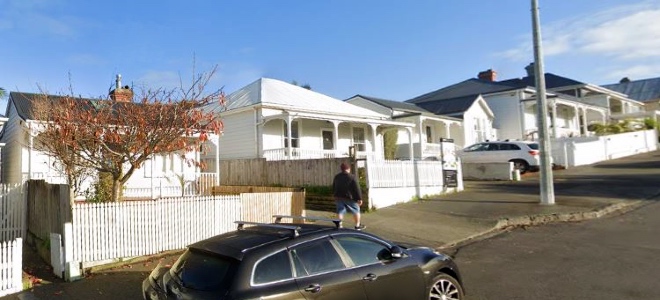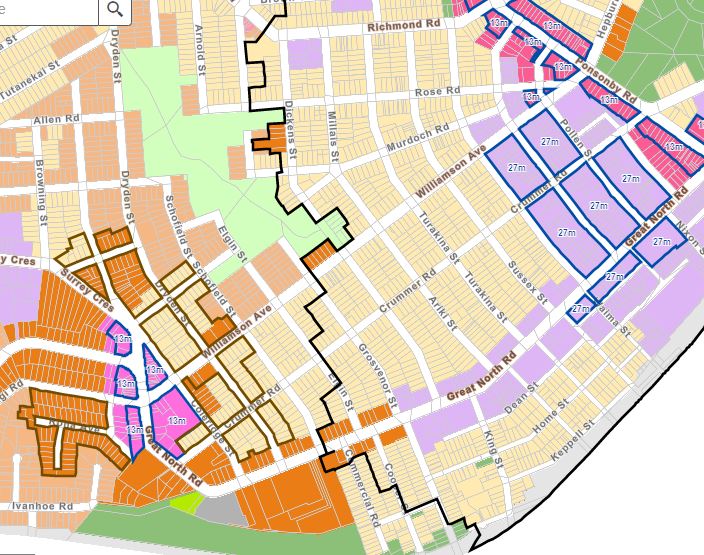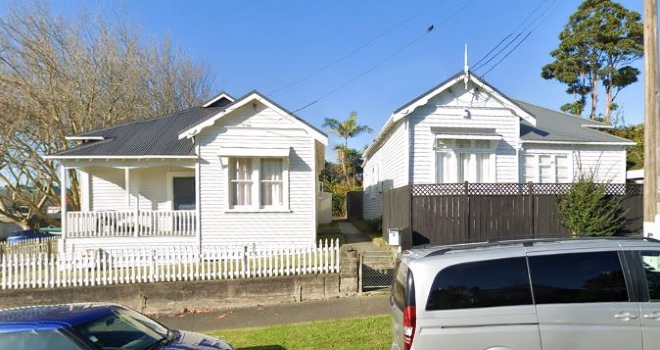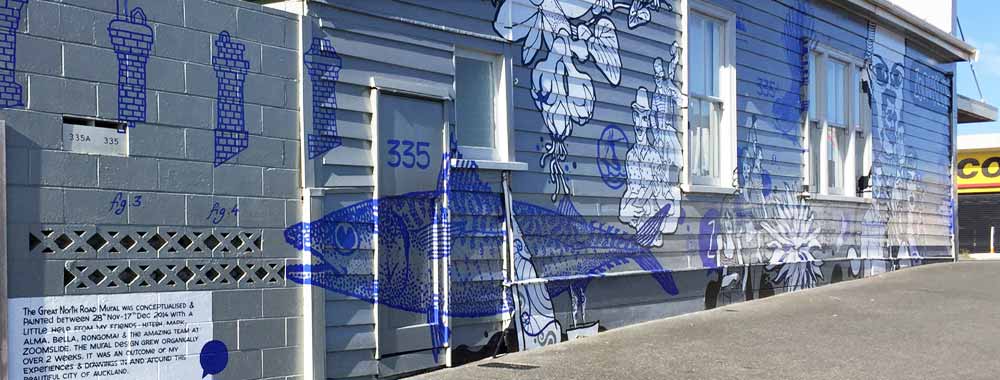
The proposed Plan Change 78 rezones all Auckland suburbs. It is open for submissions until 29 September 2022. Make sure you have your say!
But doesn’t the Unitary Plan already provide for more intensification over the next quarter century?
Yes, it does. But central government has decided that vastly more housing capacity is needed to fix the housing crisis. Both Labour and National supported the National Policy Statement on Urban Development (NPS-UD) and a later amendment, which introduces Medium Density Residential Standards (MDRS).
This legislation requires councils in New Zealand’s larger cities to allow developments of three dwellings, three storeys high on most residential sites.
Also apartment buildings at least six storeys high in areas close to the CBD and metropolitan centres, and around rapid transit stops (train and bus stations).
Councils can also rezone areas adjacent to other shopping centres for apartment buildings.
There is a good case for apartment buildings, but they need to be in the right place. There is already a large amount of land where high-density apartments can be built in Grey Lynn under the Auckland Unitary Plan, including the length of Great North Road. Some have already been erected but there is much more land that is yet to see this kind of development.
There are also several blocks of land off Great North Road at the city end in streets including Maidstone, Pollen, Mackelvie, Scanlan, Burns, Nixon and Putiki Streets where existing commercial buildings, many of them one and two storeys in height, can be replaced with 27 metre high buildings with commercial space on the ground floor and many floors of apartments above.
It’s also worth noting that a great deal of high- and medium-density housing is currently being built in Auckland. With record low immigration, the city has time to make up for the shortfall in residential building from previous years.
In the year to September 2021 the number of new homes consented in Auckland rose to a record high of 19,886, a 29% increase on the previous year and accounting for around a third of all new home consents in the country.
(Ref: https://www.stats.govt.nz/news/annual-number-of-new-homes-consented-rises-25-percent)
Incredibly, the number of houses consented nationally per 1,000 people in September 2021 reached 9.3, the highest number since 1977.
(Ref: https://www.stats.govt.nz/news/rise-in-new-homes-consented-per-1000-residents)
So we think this plan change is trying to fix a problem that is already well on its way to being fixed.

What are the proposed changes for Grey Lynn under Plan Change 78?
One of the big changes is that a substantial area around the Grey Lynn shops has been upzoned to Terrace House and Apartment Zone – the areas outlined in brown and coloured dark orange in the map below.
The lighter coloured areas with the brown outline in the map below have not been upzoned because they are covered by the special character overlay, which Council has identified as a “qualifying matter” – something that prevents the automatic upzoning.
A few other areas have been upzoned to Terrace House and Apartment Zone: some properties in Dickens Street and a few on Williamson Avenue by the entrance to Grey Lynn Park. These areas are within 1.2km of the edge of the CBD, an area that Council considers a “walkable catchment”, and not protected by a special character overlay.
The remaining residential land within this walkable catchment is covered by the special character overlay and therefore not upzoned.
However… there is no guarantee that special character will remain a qualifying matter. If it doesn’t then all of the land on the city side of the black line on the map below would be zoned to allow apartment blocks at least 6 storeys high.
We believe this would result in a massive oversupply of residential high density zoned land, only some of which would get redeveloped in this way.
All other residential land that isn’t covered by a qualifying matter is automatically zoned Mixed Housing Urban, allowing three dwellings, three storeys high on each site. This on its own provides a massive increase in housing capacity across Auckland.

What can you do?
Make a submission on Plan Change 78.
What can you say in your submission?
Support the qualifying matters identified by Council that have reduced the impact of Plan Change 78 on our suburb. These are…
Special Character Overlay
The special character overlay protects many of the charming special character streetscapes of our suburb. Council has opted to keep the overlay on virtually all of the special character areas in Grey Lynn that had originally been identified in the mid 1990s.
Other suburbs have not fared so well, losing much of the special character overlay when Auckland Council reassessed the special character areas. Only the high-quality areas retain the overlay and the fact that the overlay remains virtually unchanged in Grey Lynn speaks of the exemplary quality of the special character overlay areas in our suburb.
We have one of the most intact collections of villa and bungalow streetscapes in New Zealand and they form a part of the largest surviving collection of timber dwellings of their era in the world. They are a valuable, tangible link to our city’s history.
Infrastructural Constraints
This qualifying matter reduces the level of development allowed in areas where the infrastructure can’t cope with additional strain. In the case of Grey Lynn the infrastructure that is lacking is stormwater and wastewater capacity in areas where the stormwater and wastewater separation has not occurred.
Given that our harbour is polluted when heavy rain causes the existing storm and wastewater system to overflow, it is wise to limit development in these areas until the storm and wastewater capacity is expanded.
Flood Plain
It’s not smart to increase the density of housing in flood prone areas, so Auckland Council has wisely identified flood plains as a qualifying matter.
Notable Trees and Notable Group of Trees Overlay
Grey Lynn has a number of protected trees and avenues of trees. These include the street trees in Hakanoa Street. Plan Change 78 will allow higher density housing to be built across much of our city. This will inevitably result in the loss of many unprotected trees, so it makes good sense to keep the ones that have protection.
Other Qualifying Matters
There area a number of other qualifying matters that you may wish to support, including volcanic viewshafts overlay, significant ecological areas overlay, etc. For further information see:
And:

Walkable Catchment and intensification around Ponsonby Town Centre and Grey Lynn Local Centre – a major issue for Grey Lynn
Much of Grey Lynn (including Arch Hill) is within areas where it is proposed to rezone residential land for high density housing. Plan Change 78 provides for apartments of 5, 6 or more storeys unless a qualifying matter prevents it. There are three areas of upzoning in Grey Lynn…
- City Centre walkable catchment of 1.2km. This is measured from the edge of the CBD, and covers almost all of Arch Hill and a large area of Grey Lynn that mostly lies east of Grey Lynn Park.
- Ponsonby Town Centre residential intensification area, which includes all the land within 400m of the edge of Ponsonby Town Centre. This area also lies within the City Centre walkable catchment.
- Surrounding the shops at Grey Lynn (shops at the junction of Williamson Avenue, Great North Road, Tuarangi Road and Surrey Crescent) is the 200m residential intensification area.
The effect of the upzoning in these areas has been mitigated by special character being included in Plan Change 78 as a qualifying matter.
However… there is no guarantee that special character will survive. Many developers and Kainga Ora strongly opposed special character through the Unitary Plan process and they will no doubt do the same this time.
Remember that if the special character overlay is removed then areas within the walkable catchment and residential intensification areas adjoining Ponsonby Road and the Grey Lynn Shops will automatically get upzoned to allow apartment buildings with no carparks.
The idea is that people living in these apartment-zoned areas won’t need cars, so its worth considering how practical such large walkable catchments are. Arch Hill has steep hills which slow walking times and make large walkable catchments less practical.
City Centre Walkable Catchment
This is a huge 1.2km from the edge of the CBD. The closest area of the CBD to Grey Lynn is by the intersection of Karangahape Road, Ponsonby Road and Newton Road.
In 2011 Auckland Council accepted the advice of International consultant Jan Gehl who said that 500m to 800m was the furthest walkable catchment likely to be used in our city.
Walkable catchments of up to 800m are considered a maximum internationally and yet Auckland Council has instead adopted a city centre walkable catchment that is 50% larger.
Ponsonby Road Town Centre – intensification of adjacent residential areas
The area to be upzoned by Plan Change 78 is measured 400m from the edge of the Ponsonby Road shops. Ponsonby Road Town Centre has been classed as a large town centre. Small town centres are given a smaller 200m residential intensification area.
In Grey Lynn, the Ponsonby Local Centre residential intensification zone is currently hidden below the City Centre Walkable Catchment, but if the City Centre Walkable Catchment is reduced in size to something more sensible, then the Ponsonby intensification area will become visible and could extend almost as far into Grey Lynn as the city centre one does.
We believe that areas upzoned for intensification (apartment buildings) around town centres should vary according to the level of services provided in the neighbouring commercial centre.
Ponsonby Road is a strip shopping area with lots of cafes and boutiques but fewer of the shops that locals would rely on to supply their day-to-day needs. If you live within 400m of the edge of the Ponsonby Town Centre you might be able to get to Ponsonby Road but then have to walk a considerable distance on Ponsonby Road to buy provisions.
The long narrow shape of the Ponsonby Town Centre zone means that it functions much more like a small town centre than a large one. Consequently a 400m intensification zone seems overly large.
In addition, intensification around town centres is not required under the NPS-UD legislation. It’s worth noting that Plan Change 78 upzones 200m from small town centres, which is half what Auckland Council proposes for Ponsonby Town Centre even though Ponsonby Town Centre functions much more like a small town centre.
Grey Lynn Shops – intensification of adjacent residential areas
Auckland Council has decided to upzone residential land within 200m of large local centres with high accessibility, allowing 5-storey apartment buildings to be built. Council’s method for deciding which local centres were small and which were large was to compare the footprint of all the local centres in Auckland.
Grey Lynn Local Centre is the smallest of the local centres that are classed as ‘large’ and having high accessibility. It has been put in the same category as local centres that have a footprint nearly three times larger than Grey Lynn’s.
Plan Change 78 proposes to upzone the residential area adjoining Grey Lynn local centre to Terrace House and Apartment zone, despite some centres with smaller footprints that are classed as ‘small’ having a greater development capacity.
Grey Lynn is a special character shopping centre and as such has a lower height limit covering much of the street frontage, so its development capacity is constrained. Nestled amongst the special character streetscapes of Grey Lynn, it’s a small special character local centre that was developed to serve the low scale special character neighbourhood that surrounds it. It is not large and never will be. As a small local centre with limited development capacity it doesn’t warrant having such a large area of adjacent land rezoned for apartments.
It could certainly be convincingly argued that it’s been wrongly classified as ‘large’. Some local centres with slightly smaller footprints have a greater development capacity because they are not special character shopping centres, which have a lower height limit.
Mt Wellington local centre (at the junction of Mt Wellington Highway and Penrose Road), for example, is classed as ‘small’ but it has a greater development capacity than the Grey Lynn local centre which is classed as ‘large’.
It’s also worth noting that the NPS-UD does not require councils to upzone land around local centres.
What else could you say in your Plan Change 78 submission?
With so much land across Auckland, including substantial areas in Grey Lynn, being zoned Mixed Housing Urban (allowing development of three dwellings, three storeys high), it’s important that Council gets the zone rules right. It’s worth requesting that council refine the rules to consider neighbours’ amenity.
Where can you find more information about Plan Change 78?
Information about Plan Change 78 can be found here…
The maps can be found here…
Submissions can be made online here…






